This page contains affiliate links. We may earn money or products from the companies mentioned in this post through our independently chosen links, which earn us a commission. Learn More
With their similar European backgrounds and physical appearances, it’s no wonder so many people compare the Belgian Malinois to the German Shepherd.
Be careful when making assumptions, though, as you might end up bringing the wrong breed home.
In this article, I’ll compare the differences and similarities between the two, as well as the pros and cons so you can make an informed decision.
You’ll learn which purebred is more aggressive, more kid-friendly, and easier to train.
At the end of this, hopefully, you’ll be able to decide which dog is the right choice for you!
Contents & Quick Navigation
History Of The Belgian Malinois
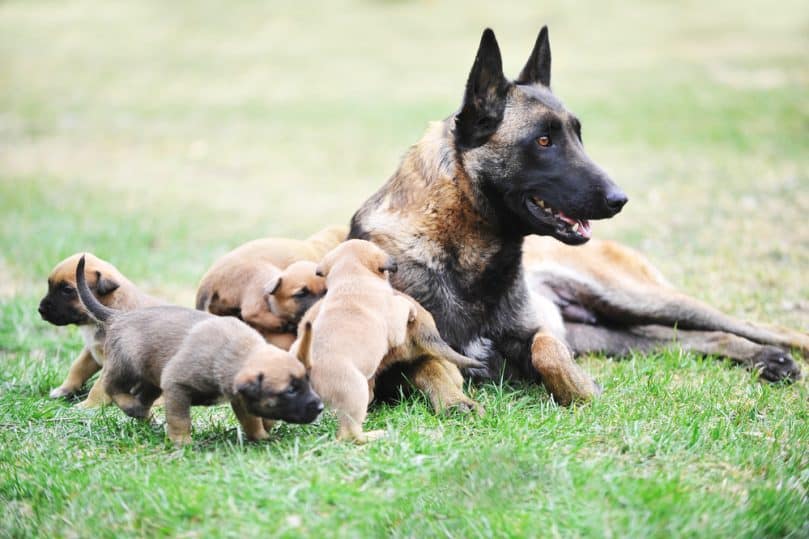
Belgian Malinois
The Belgian Malinois is one of four Belgian Sheepdogs that were primarily used for herding livestock. The other three are…
- Teruven (has a long-haired coat with a black overlay)
- Laekenois (has a wooly brown and white coat)
- Dutch Shepherd, also known as the Groenendael (has a brindle long-haired coat)
Their coat colors are the easiest way to tell them apart since their personalities and histories are quite similar.
Out of these three, the Belgian Shepherd is most commonly compared and mistaken for the Dutch Shepherd. Let’s run through their differences real quick.
Firstly, Dutch Shepherds typically have brindle stripes of gold or silver, while the Belgian Malinois can have a range of colors.
Dutch Shepherds are also slightly smaller and stockier. The Belgian Shepherd is larger with a square-shaped body of equal length and height.
Lastly, Dutch Shepherds are considered a rare breed, while the Belgian Malinois is not.
The Belgian Malinois was bred in Malines, Belgium, where it got its name.
It was first brought to the United States in 1911, but World War II put an end to the importation of European dog breeds, which could explain why this breed is not as popular in America.
After the war, the Belgian Malinois began to thrive again and is now found in homes from coast to coast.
Where Did The German Shepherd Come From?
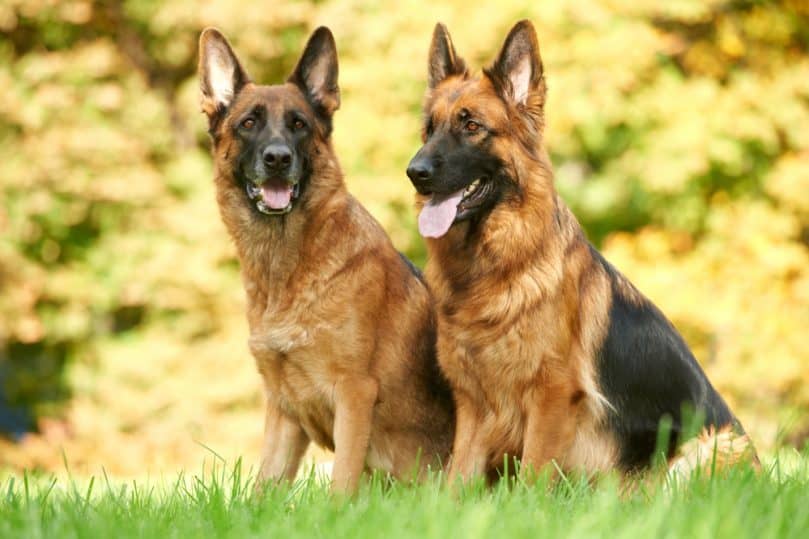
German Shepherds
The German Shepherd descended from a combination German herding dogs (similar to the Belgian Malinois).
This dog was bred by cavalry officer Captain Max von Stephanitz, who combined various strains of local dog DNA to get the German Shepherd we see today.
It did not start out as a purebred, but after so many decades of generational breeding, it is now considered one.
According to a 2017 survey, the German Shepherd is considered the second-most popular dog in the world…but why is that?
Well, it could be because this dog appeared in classic pop culture movies such as Rin-Tin-Tin and Strongheart.
Stephanitz was a smart man who quickly picked up on the declining need for livestock-protection dogs with the advancement of technology, weapons, and corporations.
And so, he began marketing the German Shepherd as the ideal K-9 worker as management careers took over the dog’s herding duties.
We still see the German Shepherd in police work to this day. Stephanitz was onto something.
Quick Facts About The Belgian Malinois
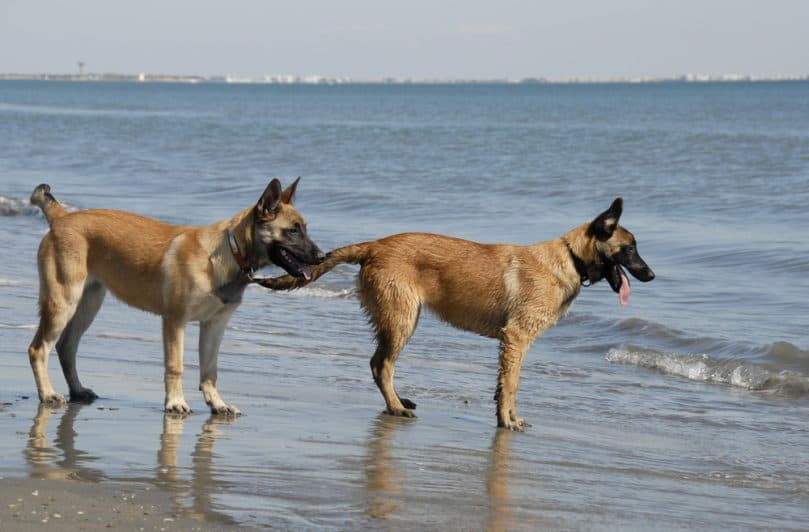
Belgian Malinois Puppies
The Belgian Malinois is a medium-to-large and square-proportioned dog best recognized for its orange eyes, black pointy ears, and matching muzzle.
Its short coat comes in color variations of fawn, mahogany, and black.
A full-grown Belgian Malinois reaches a height of 22 – 26 inches (55 – 65 cm) and a weight of 55 – 75 pounds (25 – 34 kg).
The Belgian Malinois has an average lifespan of 10 – 12 years and is not prone to any major health issues.
Although, it may occasionally suffer from elbow dysplasia, pannus (fatty tissue growth around the joints), and cataracts.
To help identify these concerns, take your dog to the vet where they’ll check its eyes, hips, and elbows.
A big pro about the Belgian Malinois is that it’s considered a healthy breed overall, which could mean no expensive medical bills. Yay!
Need-To-Know Info About The German Shepherd

German Shepherd Puppies
The German Shepherd has a similar square build to the Belgian Malinois, except it’s slightly longer and curvier.
No, I don’t mean overweight. The German Shepherd has a smoother body shape with fewer angles compared to the Belgian Malinois.
The coat colors of a German Shepherd frequently come in pairs.
- Black and gold
- Black and silver
- Black and red
- Black and brown
Dogs with these colorings have a black muzzle and ears. But if you look hard enough, you can also find a black German Shepherd with a solid coat.
A full-grown German Shepherd reaches a height of 22 – 26 inches (55 – 65 cm) and a weight of 49 – 88 pounds (22 – 40 kg).
The Belgian Malinois and German Shepherd are both equally tall, but the German Shepherd can be 10 pounds heavier.
Although the German Shepherd is said to be the ultimate K-9 companion, it sadly does come with a variety of health issues (way more than the Belgian Malinois).
Perhaps you’ve seen a German Shepherd limping on its hind legs. That’s due to arthritis.
It’s caused by some form of joint disease and can range from mild to severe. The best way to treat it is with surgery, but that can cost upwards to $4000.
German Shepherd also may experience hip dysplasia, intervertebral disc disease (a severe back problem), and pancreatic insufficiency (a digestive issue that could be life-threatening).
In terms of medical bills, the Belgian Malinois is the cheaper way to go.
The lifespan of a German Shepherd is 9 – 13 years.
A Police Officer’s Best Friend

Belgian Malinois
Both breeds belong to the Working Group, which makes them naturally intelligent, strong, and watchful.
The temperament of a Belgian Malinois is alert, confident, and protective — with a sweeter, friendlier side around familiar faces. Not with strangers.
The personality of a German Shepherd is loyal, confident, and obedient — these traits will come into play when we talk about training later.
Based on these characteristics, both breeds make great field dogs for police officers.
Belgian Malinois are said to be most common at TSA lines inside the airport as well as train and subway stations.
Why? Because they’re smaller and can fit into tighter spaces. And their noses are great for sniffing out drugs.
German Shepherds, on the other hand, are more often used in chases to take down enemies because they’re heavier and stronger.
Here’s a useful tip for aspiring police officers: this forum recommends starting with a German Shepherd because they’re easier to handle.
One user even wrote, “Every Malinois I’ve seen is CRAZY, good at what they do, but crazy!”
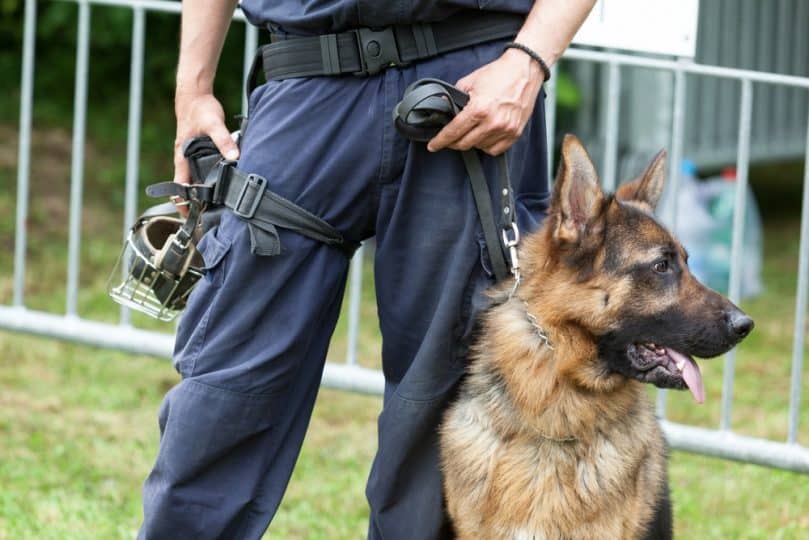
German Shepherd
The Ultimate Military Dogs
Police work is one thing, but what about the military?
The Belgian Malinois is the dog of choice for deployment in the Middle East. With their short coats, they handle the heat better than German Shepherds.
This dog’s lighter and more compact body also makes it better for tandem parachute jumps.
In fact, a Malinois named Cairo was part of the U.S Navy SEAL mission that killed Osama bin Laden in 2011.
Pretty impressive, huh?
Additionally, the Dogs Of Defense organization was created in the United States during World War II.
Their list of preferred breeds includes:
- German Shepherds
- Doberman Pinschers
- Giant Schnauzers
- Belgian Sheepdogs
- Short-haired Collies
Belgian Malinois vs German Shepherd: Choosing The Right Dog For Your Family
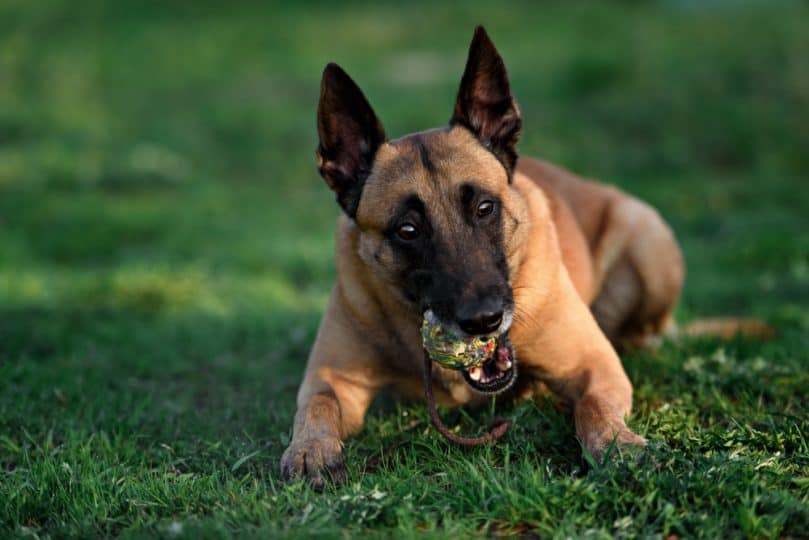
Belgian Malinois
OK, enough military talk!
The German Shepherd is easier to train than the Belgian Malinois simply because it’s more loyal and obedient.
If you want to train a Belgian Malinois, prepare to spend a lot of time socializing it (which means less quality time with the family).
Both the German Shepherd and Belgian Malinois can be good around children as they’re naturally protective.
But don’t leave your baby unattended with these larger breeds. Always be watching!
As for other pets, the German Shepherd has a better chance of getting along with dogs and cats.
The German Shepherd also takes up more room at home because it’s bigger.
Meanwhile, the Belgian Malinois is more hyper and active and needs a house with a large, fenced yard.
No apartments!
Being the second-most popular dog, the German Shepherd is an obvious choice for families. The Belgian Malinois ranks at #44.
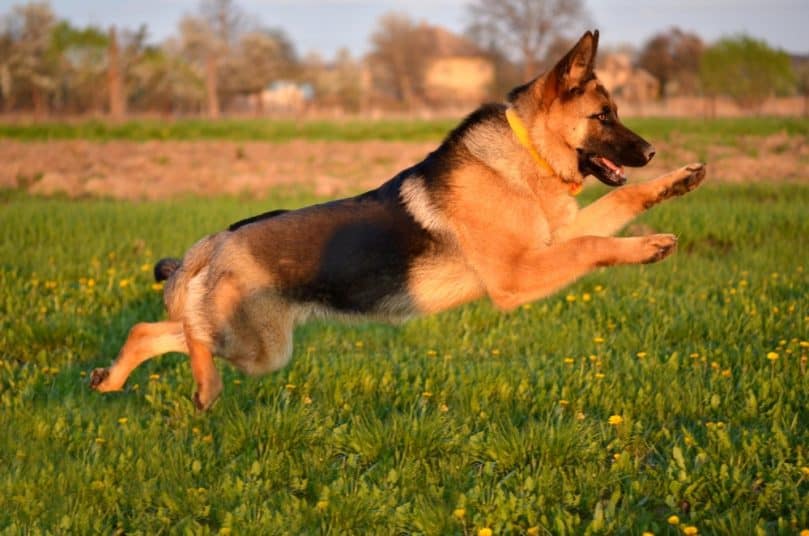
German Shepherd
Malinois vs German Shepherd: Which Breed Is More Aggressive?
This is the million dollar question.
Every article I’ve read was very clear that the Belgian Malinois is more aggressive.
Not only that, but it’s faster, more active, and more energetic than the German Shepherd, making this a potentially dangerous combination.
The German Shepherd tends to be more even-tempered and calm in stressful or unfamiliar situations.
Although, it has a stronger bite force.
The Belgian Malinois is highly sensitive to its surroundings and reacts more.
To see more side-by-side comparisons, watch the video below!
How To Care For These Breeds
For grooming, the Belgian Malinois’ short coat does not require trimming or stripping.
Its single coat sheds seasonally in the Spring and Fall, therefore, it’s not “hypoallergenic.”
The German Shepherd’s longer coat needs brushing several times a week, and its double coat sheds year-round.
Also not “hypoallergenic.”
Besides that, all breeds need their teeth and ears cleaned and their toenails cut once they start making noise on the floor.
Because the Belgian Malinois is so active, it needs at least 90 minutes of exercise, usually divided into 2 – 3 walks per day.
The German Shepherd also loves physical activity and needs about an hour of outdoor adventure.
Both breeds should never be taken off-leash in an open area as they can get easily distracted and take off!
If you want to use your German Shepherd or Belgian Malinois for work (livestock protection, police duties, as a service animal etc.) you’ll need to feed it high-quality food.
Active dogs like these need between 1740 – 2100 calories per day.
Belgian Malinois vs German Shepherd Cost

Belgian Malinois
The average price of a Belgian Malinois is $600, which is much cheaper when compared to the German Shepherd at $1000.
You can shop for both breeds at Adopt A Pet, Pet Finder, and the ASPCA (all adoption and rescue places).
Or, you can check out these breeder websites: Maces Malinois (based in Florida), Ruidoso Malinois (based in New Mexico), Zimmerhoff German Shepherds (based in Oregon).
Keep in mind that you can also find German Shepherd Belgian Malinois mixes on the market — not just the purebreds.
This website has some mixed puppies for sale!
Malinois or German Shepherd? Which Breed Is Right For You?
Well, there you have it — a full breakdown of the similarities and differences between these courageous breeds!
The right owner for a Belgian Malinois is someone who loves exercise, has a fenced yard, and is dedicated to the training and socializing process.
The right owner for a German Shepherd is someone who has the income to pay for potentially high medical bills and doesn’t mind the frequent grooming.
If you have allergies or feel intimidated by these powerful dogs, pick a different breed!
Now it’s time for you to decide! Are you Team German Shepherd or Team Belgian Malinois?
Comment below!

1 reply on “Belgian Malinois VS German Shepherd: Which Breed Is Right For You?”
I’m a gsd all the way! Raised with 4 as a child and raised my daughter’s . the love and affection from gsd is like no other! one look into those chocolate eyes and you’re a goner, in love, with love!